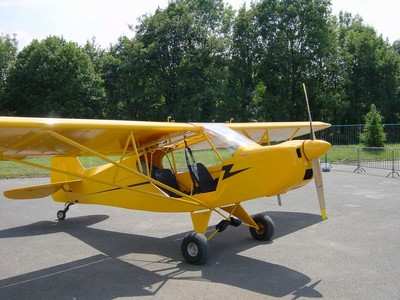Pilots Tell Investigators Plane Stalls At Higher Speeds Than
Indicated
 (EDITOR'S
NOTE: In regards to the discrepancy between speed arc
ranges on the airspeed indicator of the Zlin Savage, and the speeds
noted in two separate sections of the aircraft's operating
manual, ANN originally reported such arc markings are not
required on airspeed indicators on S-LSA, based on the following
statement in the NTSB report:
(EDITOR'S
NOTE: In regards to the discrepancy between speed arc
ranges on the airspeed indicator of the Zlin Savage, and the speeds
noted in two separate sections of the aircraft's operating
manual, ANN originally reported such arc markings are not
required on airspeed indicators on S-LSA, based on the following
statement in the NTSB report:
"The ASTM standards do not outline requirements for airspeed
instrument markings. ASTM 2245-04 (under which the accident
airplane was designed) Section 8.2.1 only requires that the
airplane shall be designed with an airspeed indicator."
The EAA's Earl Lawrence -- who chaired the ASTM rules
committee on the matter -- responded Wednesday the NTSB has it
wrong. "[Section ] 9.10.1 Airspeed indicator range markings"
clearly means to me that there are suppose to be airspeed
instrument markings, it's even in the section that says "required
placards and markings."
Lawrence adds he has called the NTSB's attention to the
incorrect statement. ANN regrets the error.
The National Transportation Safety Board says improper arc
markings on the airspeed indicator of a Zlin Savage light sport
aircraft contributed to the August 2007 loss of the plane near
Mosquero, NM that claimed the lives of the two
persons onboard.
According to the Board's Probable Cause report, the pilot's
failure to maintain adequate airspeed was cited as the primary
cause of the crash, which killed pilot Jeffrey Lane and passenger
Ryan Hartley. The wreckage displayed evidence of a stall/spin-type
accident; data recovered from the Garmin GPS396 onboard the plane
showed the aircraft entered a steep, spiraling descent during a
left 360-degree turn from about 350 ft. AGL.
The Board also noted discrepancies between the arc markings on
the plane's airspeed indicator, versus differing values listed in
two separate sections of the aircraft's flight manual.
Investigators say the aircraft's airspeed indicator included
markings denoting the white arc extending from a lower range (Vso,
or stall speed at maximum takeoff weight, in landing configuration)
of 36 mph, through the upper (maximum speed with flaps extended)
limit of 71 mph.
Those markings do not match up with the white arc range noted in
the "Airspeeds" section of the aircraft's operating manual -- 31
mph through 69 mph -- nor do they match what the manufacturer
states is the VSO in the "Performance" section of the flight
manual, which is 38 mph.
Furthermore, the NTSB cited several pilots who stated "they had
experienced stall conditions in the Zlin Savage well above the
published stall speeds.
"One flight instructor stated that while climbing out he
encountered what he felt was a downdraft and the airplane 'began an
enormous descent,'" according to the Board's report. "He stated
that the airplane handled as though it 'were in a deep and
unrecoverable stall.' Another flight instructor with extensive
experience in various S-LSA aircraft experienced a stall in the
Zlin Savage around 58 mph, well above the published stall speed. He
stated that during this particular flight he was climbing in smooth
air, wings level."
Not all pilots interviewed by the NTSB agreed with those
assessments, however. Other Zlin Savage owners and pilots told the
Board the plane (type shown below) exhibits docile stall behavior,
at slow speeds.

According to Lane's logbook, the pilot had over 3,400 hours
flight time, with at least five hours in the accident airplane.
Eight months before the crash, Lane had completed a flight review
at Flight Safety International.
 ANN's Daily Aero-Linx (04.15.24)
ANN's Daily Aero-Linx (04.15.24) Classic Aero-TV: 'No Other Options' -- The Israeli Air Force's Danny Shapira
Classic Aero-TV: 'No Other Options' -- The Israeli Air Force's Danny Shapira Aero-News: Quote of the Day (04.15.24)
Aero-News: Quote of the Day (04.15.24) Airborne 04.16.24: RV Update, Affordable Flying Expo, Diamond Lil
Airborne 04.16.24: RV Update, Affordable Flying Expo, Diamond Lil ANN's Daily Aero-Term (04.16.24): Chart Supplement US
ANN's Daily Aero-Term (04.16.24): Chart Supplement US




